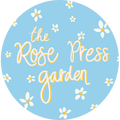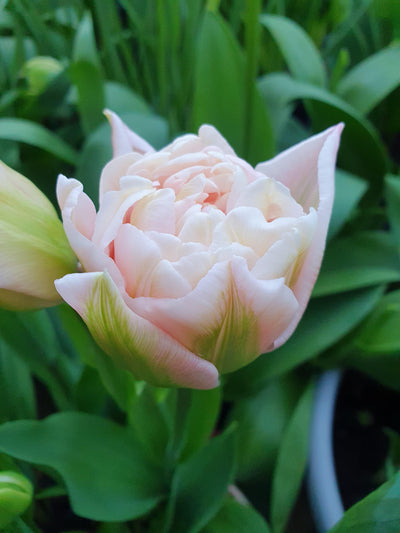Starting a new border from scratch
Perhaps space in your greenhouse is getting a little tight due to the many seedlings you have autumn sown, and perhaps you are becoming a little anxious as to where on earth you’ll find space in your garden for all those seeds and bare roots you have ordered? Don’t worry, if ground space in your garden allows, a new border will solve all problems: providing space for all your plants (and more!) But with grass often seeming an impenetrable green carpet, this can seem easier said than done, leaving many wondering where you could possibly start.

The initial step is to gauge a brief understanding of the aspect and climate of the patch in which you wish to plant. Is it below a tree? In the shadow of a fence? Against a south-facing wall which smoulders in summer? By getting a better comprehension of where your border will sit, you will start to understand more about the soil within it, and as a result what might thrive there. For example, soil in deep shade is more likely to be dense, wet and damp. However, in a spot which catches the sun all through the day, dry and sandy conditions would be more typical. Next it is best to ponder what it is you want from the border; will this be somewhere to experiment with annuals, try your hand at growing flowers for cutting or even growing your favourite fruit and veg… the possibilities are endless!
Once you have a vague idea and brief plan of the aspect of your border and what you intend to grow, start marking out and gathering materials. Will it be a raised bed, will it be edged, or does it need to be levelled beforehand? These are all things to consider and now is probably the perfect time to recruit a friend or family member that is particularly good at DIY. Measuring is key – there is nothing wrong with a meandering border, but not if it was intended to be straight lines! The old warning of always being able to cut more but not being able to stick back on certainly applies here.
If grass has been lifted in order to facilitate your border, hesitate before throwing it in the green waste. If you have anywhere in your garden that needs turfing (or indeed a friend or neighbour does) then it may be a perfect way to recycle sections of grass. If not, turf can always be recycled through composting; with the layers that have broken down adding goodness and nutrients to homemade soil.
Next is mulching, the hidden, secret ingredient of gardening! By incorporating organic matter in any shape or form into your border it will boost nutrient content and help your plants thrive. Bear in mind the original consistency of your soil: clay will benefit from lighter mixes such as sand and leaf mould, and sandy/chalky soil will benefit from loam or manure. Also consider what it is your border is intended for: vegetables will crave the goodness from mushroom compost, whereas wildflowers prefer a soil entirely devoid of nutrients. Whatever you will be planting and whatever your soil’s initial consistency, ensure that you research thoroughly in order for your plants to succeed and flourish throughout the year.
Now, finally, the most exciting part – the bit you’ve been waiting for, the purpose of your border… the plants! If planting a mixed or herbaceous, decorative border, layers are key. Ensure you work from the top down, planting trees and shrubs (depending on your border’s size!) followed by herbaceous perennials, annuals, bulbs and groundcover. This layered recipe – almost like the tiers of a multi-story wedding cake – will make certain that your border is packed to the brim with interest right the year around. The range of bulbs, seeds, bare-roots and more available at The Rose Press garden are a stunning way in which to fill your new border; providing new and exciting varieties, the most stunning colours, as well as all-time favourites – it really is a one stop shop for all things flowers! The monthly subscription box is an ideal source of inspiration, especially if you are looking to expand or develop the planting in your outside space, it will provide you with stunning combinations and things you never previously would have thought of!
Making a new border does not have to be a daunting or remotely scary prospect, it is an ideal weekend job for the winter months, to ensure that this year in the garden is the best year yet!





Hi there this has been so helpful thank you. I have a border existing that I want to start over with. It’s on the edge of the garden with a path and part of our house behind it so that rules out planting high at the back then getting lower at the edge of the border. I’d love any suggestion for how to tackle this. Thanks in advance.
Leave a comment